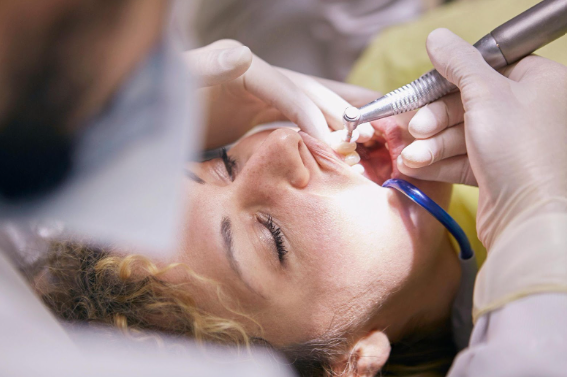Gateway Family Dental Blog
A Comprehensive Guide to Braces and Clear Aligners

Orthodontics offers various solutions to improve dental alignment and bite issues. Two popular procedures are traditional braces and clear aligners. Both methods effectively straighten teeth and correct misalignments, but they cater to different needs and preferences.
Let’s explore the key aspects of braces and clear aligners to help you understand which option might be best for you.
Traditional Braces
Traditional braces are a well-established orthodontic option. They consist of metal brackets and wires fixed to the teeth. The brackets are attached to each tooth with a special adhesive, and the wires are threaded through them. Regular adjustments are made to the wires to gradually shift the teeth into the desired position.
Types of Braces
Braces are available in several different styles, such as:
- Metal Braces: These are the most common type of braces and are made of stainless steel. They are durable and effective, but they can be more noticeable than other types of braces.
- Ceramic Braces: These braces are made of clear or white ceramic material, making them less noticeable than metal braces. However, they may be more prone to staining and breakage.
- Lingual Braces: These braces are hidden behind your teeth, making them almost undetectable. However, they can be more difficult to clean and may be more uncomfortable than traditional braces.
Advantages of Traditional Braces
Traditional braces are proven to be effective in correcting intricate dental issues. They are particularly useful for correcting severe overcrowding, large gaps between teeth, and significant bite problems. The fixed nature of braces means that they continuously work to move the teeth, providing consistent progress.
Disadvantages of Traditional Braces
One drawback of traditional braces is their visibility. The metal brackets and wires can be noticeable, which may concern some individuals, particularly adults. Additionally, braces require more maintenance, including regular visits to the orthodontist for adjustments and potential dietary restrictions to avoid damaging the hardware.
Clear Aligners
Clear aligners are a more recent development in orthodontics, offering a less noticeable alternative to traditional braces. Brands like Invisalign provide these aligners, which are made from a clear, flexible plastic material. The aligners are custom-made to fit over your teeth and gradually move them into the correct position.
Advantages of Clear Aligners
Clear aligners are made from transparent plastic, so they are much less visible than metal braces. This makes them a popular choice among adults and teens who are concerned about the appearance of their orthodontic treatment. Clear aligners are also removable, which means you can take them out while eating or brushing your teeth, providing greater flexibility and convenience.
Disadvantages of Clear Aligners
Clear aligners may not be suitable for all orthodontic issues and are generally more effective for mild to moderate alignment problems. It may not address more complex cases as effectively as traditional braces. Also, the success of aligners depends on the patient's adherence to wearing them as prescribed. Failure to wear the aligners for the recommended amount of time can lead to delays in treatment progress.
Comparing Braces and Clear Aligners
When deciding between traditional braces and clear aligners, several factors should be considered:
Treatment Complexity
Traditional braces are often preferred for more complex orthodontic issues, while clear aligners are best suited for less severe problems.
Aesthetics
Clear aligners are nearly invisible, making them an attractive option for those concerned about their appearance during treatment. Traditional braces are more noticeable but remain effective for a wider range of issues.
Maintenance
Clear aligners offer greater convenience since they can be removed for eating and oral hygiene. Braces require more rigorous maintenance and care to avoid damage and staining.
Duration of Treatment
The length of treatment can vary depending on the severity of the alignment issues and the chosen method. Traditional braces may take longer to achieve results compared to clear aligners, but this depends on individual circumstances.
Making the Right Choice
Choosing between braces and clear aligners depends on your specific needs and preferences. It is essential to consult with an orthodontist who can assess your dental situation and recommend the most suitable option. Factors such as the complexity of your case, your aesthetic preferences, and your lifestyle will play a role in determining the best treatment approach.
Both traditional braces and clear aligners offer effective solutions for achieving a straighter
smile. Understanding the advantages and disadvantages of each method can help you make an informed decision about your orthodontic treatment. Whether you opt for the tried and true method of braces or the modern convenience of clear aligners, the ultimate goal is to improve your dental health and achieve a smile that you feel confident about.
Ready to achieve the smile you've always wanted? At
Gateway Family Dentistry, we offer personalized orthodontic solutions, including traditional braces and clear aligners. Our experienced team is here to guide you through every step of your journey to a healthier, more confident smile.
Schedule your consultation today and let us help you find the perfect treatment for your unique needs!




